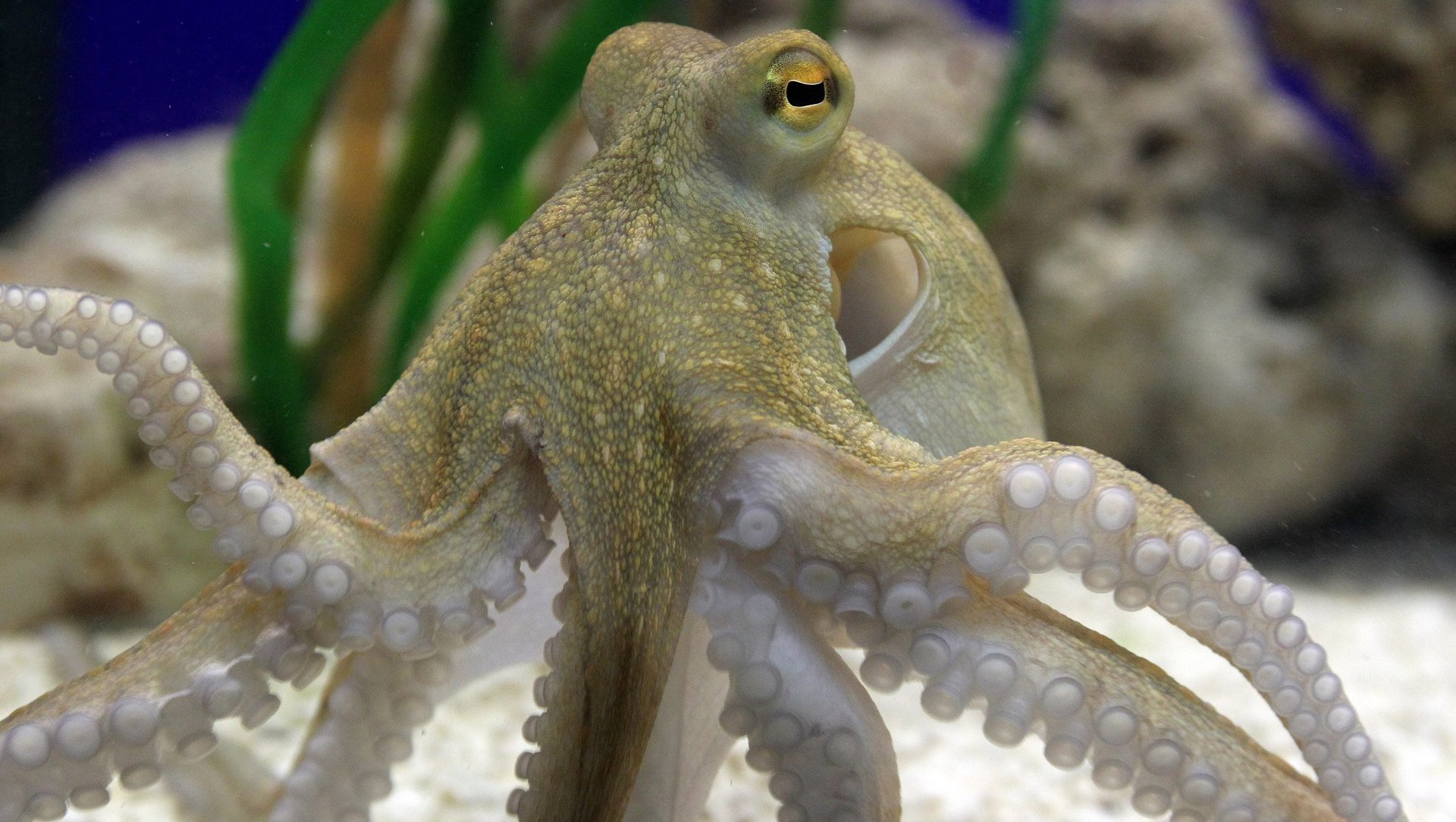Octopus research shows that consciousness isn’t what makes humans special
Whether or not octopuses should be viewed as charming or terrifying very much depends on your personal perspective. But it’s hard to deny their intelligence.


Whether or not octopuses should be viewed as charming or terrifying very much depends on your personal perspective. But it’s hard to deny their intelligence.
Octopuses can squirt water at an annoyingly bright bulb until it short-circuits. They can tell humans apart (even those who are wearing the same uniform). And, according to Peter Godfrey-Smith, a philosophy professor at University of Sydney and City University of New York, they are the closest creature to an alien here on earth.
That’s because octopuses are the most complex animal with the most distant common ancestor to humans. There’s some uncertainty about which precise ancestor was most recently shared by octopuses and humans, but, Godfrey-Smith says, “It was probably an animal about the size of a leech or flatworm with neurons numbering perhaps in the thousands, but not more than that.”
This means that octopuses have very little in common with humans, evolution-wise. They have developed eyes, limbs, and brains via a completely separate route, with very different ancestors, from humans. And they seem to have come by their impressive cognitive functioning—and likely consciousness—by different means.
“A real alien would be a sentient being with no common ancestry with us at all, arising completely independently,” says Godfrey-Smith, who published a book on consciousness and octopuses earlier this year. “We might never meet that—if we do, that would be great. If we don’t, the octopus is our best approximation because there’s a historical connection but it was a long time ago.”
There’s no clear way of evaluating consciousness in other animals (or in other humans, for that matter—it’s quite possible that you’re the only conscious being alive and everyone you know is merely displaying signs of consciousness rather than truly experiencing it). But we can certainly make educated guesses. Broadly speaking, consciousness is often defined as there being an experience of what it’s like to be said creature. (This notion is explored in depth in philosopher Thomas Nagel’s essay, “What is it like to be a bat?”)
Octopuses display signs of curiosity, and Godfrey-Smith believes it’s extremely likely that they’re conscious beings. “I think the exploratory behaviors, the fact that they attend to things, they have good eyes, they evaluate, are little bits of good evidence that there’s something it’s like to be an octopus.”
Part of this is impressionistic; Godfrey-Smith acknowledges that they simply look like intelligent, conscious creatures. But they also perform certain tasks that are known to be conscious in humans. “Dealing with novelty, when you attend to a novel thing, is always conscious in humans,” he adds.
Given the distant common ancestry between octopuses and humans, conscious octopuses would mean that consciousness has evolved on earth twice. Godfrey-Smith believes it’s plausible that there are more than two branches of evolution where consciousness independently developed.
It’s important to figure out whether consciousness is “an easily produced product of the universe” or “an insanely strange fluke, a completely weird anomalous event,” says Godfrey-Smith. Based on the current evidence, it seems that consciousness is not particularly unusual at all, but a fairly routine development in nature. “I suspect animal evolution, if were replayed again, it would produce subjectivity of a somewhat similar kind,” he adds. “You can see why it makes biological sense.”